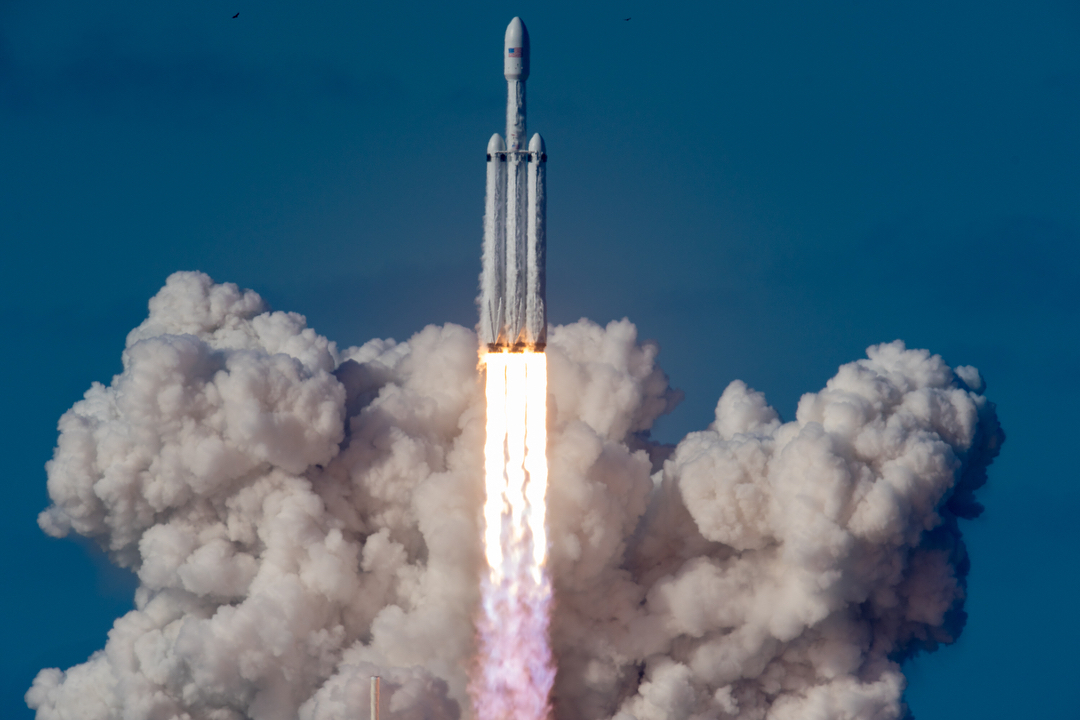SpaceX Falcon Heavy rocket will launch internet satellite to serve Alaska in 2022

SpaceX's Falcon Heavy rocket just got another passenger.
The powerful Falcon Heavy is now scheduled to loft Astranis' first commercial communications satellite to orbit next spring, Astranis representatives announced Thursday (Sept. 23).
The satellite — which will beam internet service down to Alaskans from geostationary orbit, about 22,200 miles (35,730 kilometers) up — had previously been slated to ride atop a SpaceX Falcon 9.
Related: The evolution of SpaceX's rockets in pictures
"Launching on Falcon Heavy will get us on orbit months faster, allowing us to serve customers in Alaska that much sooner," Astranis CEO John Gedmark said in a statement. "This is a huge win for our customers in Alaska."
The Alaska-serving satellite will be just the beginning for Astranis, if all goes according to plan.
"By owning and operating its satellites and offering them to customers as a turnkey solution, Astranis is able to provide bandwidth-as-a-service and unlock previously unreachable markets," representatives of the San Francisco-based company wrote in the same statement. "This allows Astranis to launch small, dedicated satellites for small and medium-sized countries, Fortune 500 companies, existing satellite operators and other customers."
Breaking space news, the latest updates on rocket launches, skywatching events and more!
The 880-pound (400 kilograms) Astranis satellite will share space on the Falcon Heavy with another communications craft — Viasat-3, which will be operated by fellow California company Viasat.
Falcon Heavy has just three launches under its belt to date, but it's poised to get quite a workout over the coming months. The rocket is scheduled to launch two classified missions for the U.S. Space Force by early 2022, the first of which will lift off next month. The Viasat-3/Astranis flight will follow shortly thereafter. And Falcon Heavy's manifest also includes NASA's Psyche asteroid mission, which is slated to launch next August.
The rocket will also fly some other high-profile missions in the near future, including NASA's ice-hunting VIPER moon rover in 2023 and Europa Clipper probe in 2024.
The Falcon Heavy consists of three modified, strapped-together Falcon 9 first stages. The central core is topped by a second stage, which carries the payload. Like the workhorse Falcon 9, the Falcon Heavy is partially reusable; all three first stages are designed to return to Earth, make vertical, powered landings, and fly again.
Mike Wall is the author of "Out There" (Grand Central Publishing, 2018; illustrated by Karl Tate), a book about the search for alien life. Follow him on Twitter @michaeldwall. Follow us on Twitter @Spacedotcom or Facebook.

Michael Wall is a Senior Space Writer with Space.com and joined the team in 2010. He primarily covers exoplanets, spaceflight and military space, but has been known to dabble in the space art beat. His book about the search for alien life, "Out There," was published on Nov. 13, 2018. Before becoming a science writer, Michael worked as a herpetologist and wildlife biologist. He has a Ph.D. in evolutionary biology from the University of Sydney, Australia, a bachelor's degree from the University of Arizona, and a graduate certificate in science writing from the University of California, Santa Cruz. To find out what his latest project is, you can follow Michael on Twitter.
